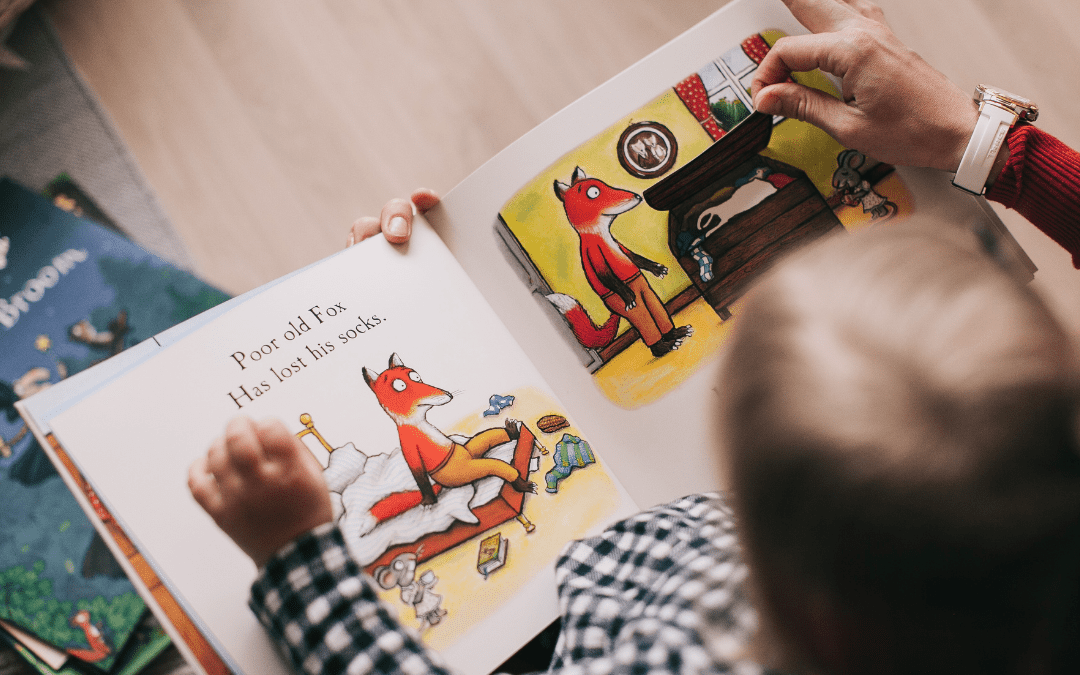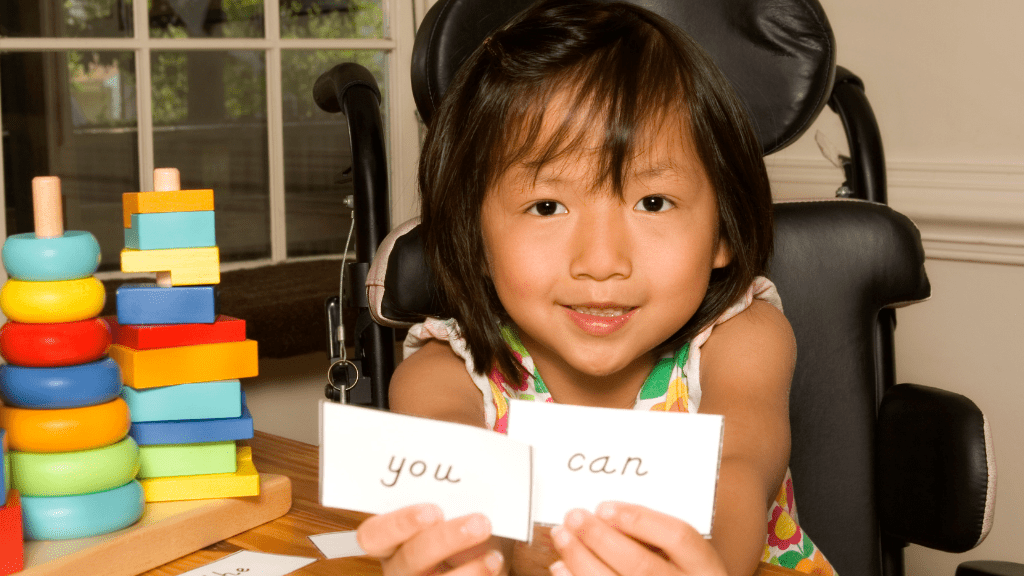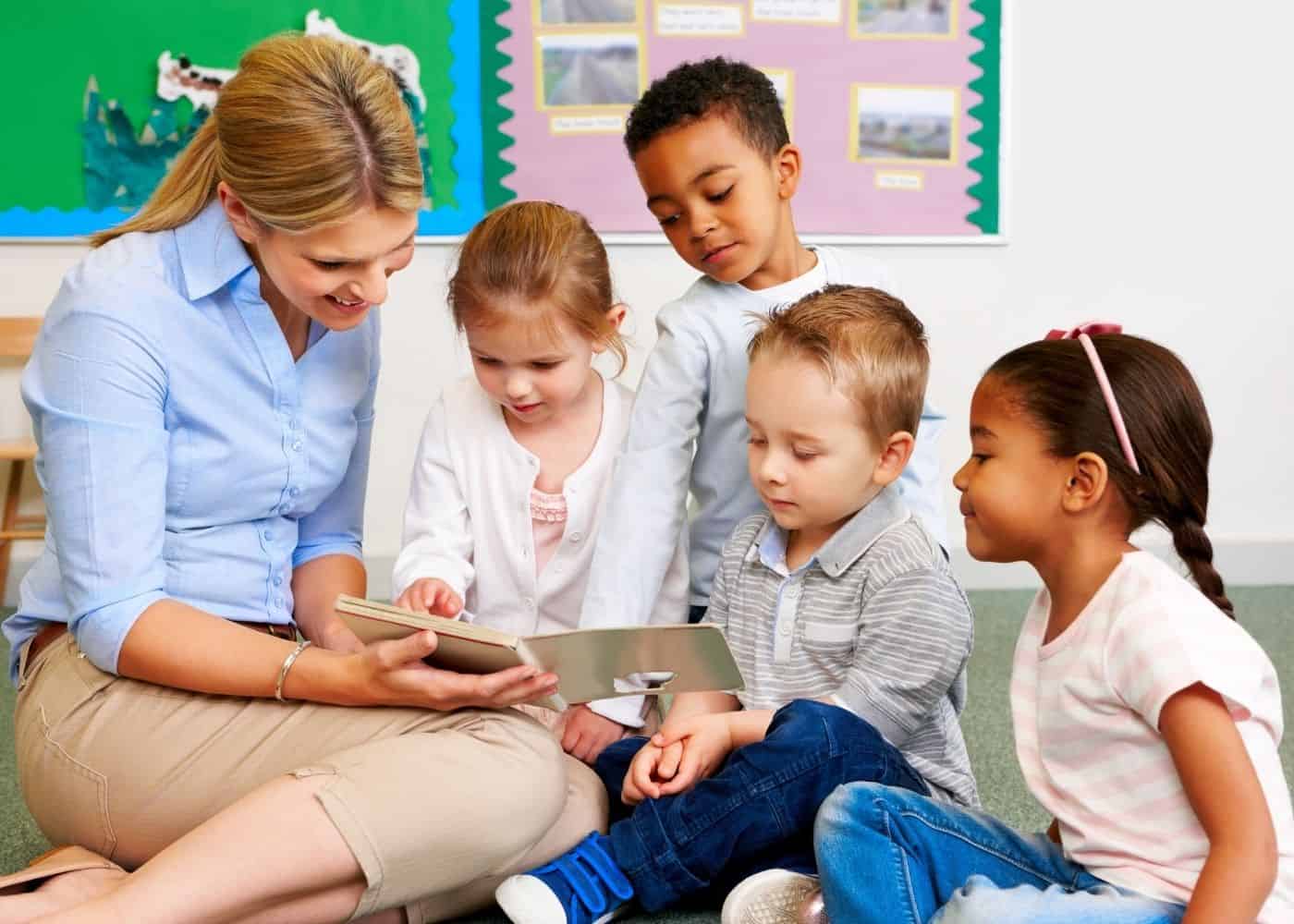Is your little one getting ready to enter preschool or kindergarten? Then this is a great age to try teaching them sight words!
Sight words are most commonly introduced at the preschool level when children are approximately four years old. A preschooler’s first 40 sight words generally include small numbers (one, two, three), primary colors (red, blue, yellow), and basic pronouns (me, we, you). By Kindergarten, at approximately five years old, many kids are expanding their sight word recognition to words for higher digits, more colors, more pronouns, some prepositions, and common adjectives.
Wondering exactly when to introduce your child to high-frequency words? Keep reading!

New to early literacy? Don’t worry! Learn the basics in our post, Supporting early literacy at homel
What are sight words?
Sight words are the words that you will find on almost every page of a book. These sight words – or “High-Frequency Words” are the ones that your child will come across when they read almost any text. From books to worksheets and letters to Santa, these words are found everywhere. So, if your little one has a head start on learning how to read them, they will be set up for success as they enter kindergarten!
Words like a, I, me, my, see, and, you, and the are examples from the Pre-K level.
A great resource to check out is Dolch Sight Words, which lists the words by age, group, or alphabetical order. They’ve also got lessons, games, and flashcards, too!
Why are they important?
According to Dolch, sight words from the Pre-K level to 3rd grade make up 80% of the words that you will find in most children’s books. This tells us that in order for your child to successfully read children’s books, they’ve got to have a solid understanding of sight words.
Another bonus is that once your child has mastered reading sight words, they can focus on learning the other words in their books. By not having to focus on every single word, their reading becomes more natural, and their reading fluency increases.
Plus, teaching high-frequency words helps beginning readers recognize common words while increasing essential phonics skills that they will use as they continue to practice literacy skills in school. Enhancing their phonemic awareness builds a strong foundation for early readers.

When to start teaching sight words
I want to stress one thing first: If your child doesn’t pick up on reading sight words right away, that is okay. Literacy is a huge part of Kindergarten and they aren’t necessarily going to fall behind if they start the year not knowing some (or any) of these words! Their teachers are equipped with the skills and resources to teach them effective phonics instruction and have the support to assist struggling readers, too.
But, if your child expresses an interest in books and a desire to read, why not try teaching them sight words? By learning these with you, you are promoting a love of literacy that will stick with them for a long time to come.
Preschool
A good time to start introducing your child to these words is at the age of around 4. I say around because some may show an earlier interest in reading and others later. Since this is the age where most children are introduced to learning via pre-k, and will soon be entering the school system, now is a good time to give it a try!
Here’s a list of the sight words to expect at preschool level:
a, and, away, big, blue, can, come, down, find, for, funny, go, help, here, I, in, is, it, jump, little, look, make, me, my, not, one, play, red, run, said, see, the, three, to, two, up, we, where, yellow, you
The list above is directly from Dolch’s list, but if you click this link there’s a PDF with all 40!
Kindergarten
If your child is already at kindergarten age and you haven’t yet started sight words, don’t fret! You can always start now!
At Kindergarten age, you can expect sight words such as:
all, am, are, at, ate, be, black, brown, but, came, did, do, eat, four, get, good, have, he, into, like, must, new, no, now, on, our, out, please, pretty, ran, ride, saw, say, she, so, soon, that, there, they, this, too, under, want, was, well, went, what, white, who, will, with, yes
Again, those are from Dolch’s list! If you want to see the full 52, use this PDF.

How to teach sight words
I’ve got a whole post on this (linked here), so I won’t get into deep detail here. What I will say, though, is that keeping reading a low-stress and highly enjoyable activity will promote a deep love of reading in your children. Don’t focus too much on how many words they know or how well they read, especially at such a young age! The important thing is to make reading a positive experience.
The best thing you can do for your emergent readers is to teach them that reading is not only important to learn, but that it’s fun too. By using a variety of resources and a range of book types, you’ll surely find something that will get them excited about reading while letting them explore topics they’re interested in!
Try to keep things fun – Asking your kiddo to memorize lists of words isn’t a super effective way of teaching reading. Finding engaging activities will still boost their reading skills! Helping them learn sight words and practice how to recognize phonics patterns through fun games and activities will create more memorable phonics lessons.
Conclusion
While many parents want their children to have at least a little bit of experience reading and writing sight words, it’s all about meeting your child where they’re at. If they are showing interest in reading and writing, then it’s a good time to start learning sight words with them! Introducing sight words from the Dolch list will give them a strong literacy foundation as they continue to develop their skills in school.
Children learn best when they’re having fun, so be sure to keep the activities fun, light, and exciting for your young readers. Rather than just asking them to memorize words, find which method works best for them and offer lots of that type of resources. They may enjoy music-based learning, games, or worksheets, for example!
Whichever resources you provide, it’s important to be consistent in practice – Frequently writing words will develop muscle memory, and consistent practice reading will enhance their letter knowledge and ability to recognize sight words as they explore language.
Resources
Looking for more literacy-related posts? Check out some of these!
- Letter tracing ideas: Ways to make writing fun!
- Alphabet letter tracing worksheets from A-Z
- Sight word sentences for emergent readers
- The best books for a 1-Year-Old: Types and titles
- What is a board book?
Reading and writing with young learners
Reading sight words are just one of the many things your child will learn when it comes to reading and writing. Check out our literacy category for more articles about these topics (and teaching tips/ideas, too!).

Leave a Reply